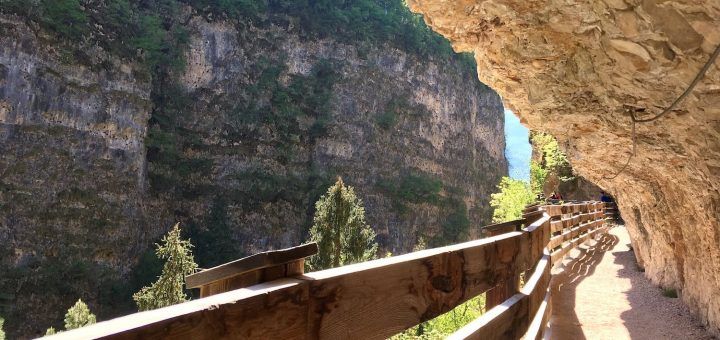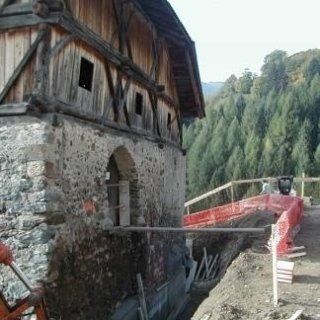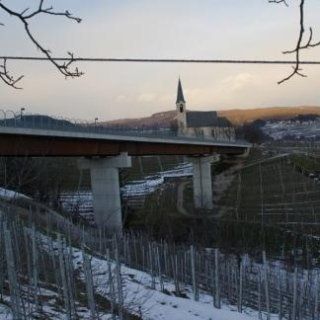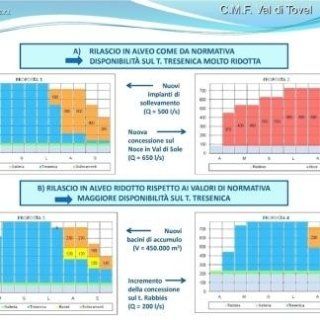Forra del San Romedio
Landscape trail in the Forra del San Romedio - Municipalities of Sanzeno and Romeno (TN)
Landscape trail in the Forra del San Romedio - Municipalities of Sanzeno and Romeno (TN)
The southern entrance of the Rio valley, where the sanctuary of San Romedio stands out, is an environment of particular landscape value among rock, water and greenery. To use the water, in the nineteenth century farmers dug a channel on the rock wall, which modern irrigation techniques use differently. The landscape path built in the gorge stretches for over 3 km in mid-height on the overhanging walls: the wayfarer walks on the imprint of the ancient canal and, in complete safety, you can enjoy unexpected and unreachable views. The design intervention of Studio Tre has allowed to conceal the aqueduct and to build, furnishing it, the long path that connects the Retico Museum of Sanzeno to the Sanctuary.


Castel Basso
Restoration of Castel Basso and historical, cultural and landscape itinerary - Comune di Bresimo (TN)
In the Altaguarda area, with the ruins of the castle and the servants' farm, the Municipality of Bresimo (TN) has enhanced an environment rich in history, culture and landscape, which brings the ruins into contact with the restored spaces for a new use, with the panorama and the alpine environment characterized by the old water wheels, with which the grain was milled and the trunks were sawed. In addition to enjoying a unique environment, Studio Tre's project provided the tools to live it and to carry out study and recreation activities for university students and researchers.
New paragraphSS. 42 between Brez and Cloz
Viability along the SS. 42 between Brez and Cloz (TN)
The integration of the problems concerning the main road system - in compliance with the rules of the road code and those of the side grafts, of the pedestrian paths for the crossing of built-up areas - was the main theme of the viability project along the SS. 42, between Brez and Cloz (TV), together with the landscape insertion, the reconstruction of the underground utilities, the formation of junctions and the solution of the specialized difficulties typical of a road project.


Territorial socio-economic studies
Many projects require in-depth socio-economic research to identify the reasons for the problem and possible solutions in a range of alternatives. The Company has gained great experience in dealing with problems at the territorial level, especially in the agricultural field, which have led to the development of agronomic, hydrological and hydrogeological studies of particular importance.
The working methodology is that of interdisciplinary research with which needs and solutions are identified and measured, which then flow into design hypotheses to be subjected to an assessment of environmental impacts.
The working methodology is that of interdisciplinary research with which needs and solutions are identified and measured, which then flow into design hypotheses to be subjected to an assessment of environmental impacts.



